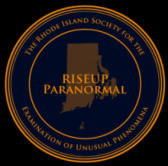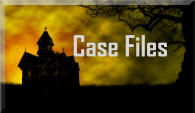CHICAGO, IL.
HISTORY
The events of February 14, 1929 were the blood-spattered yield of seeds planted years earlier over the
control of bootleg liquor, gambling and prostitution between two rival Chicago syndicates, The North Siders,
led by Dion O'Banion and their South Side antagonists under the leadership of Johnny Torrio. The Prohibition
Act of 1920 forced the open manufacturing and sale of alcohol underground, which crime syndicates took full
advantage of. The establishment of illegal drinking establishments called "Speakeasies" - a name derived
from the idea of keeping their existence a secret - would frequently house all three of their main illegitimate
interests. The hostilities between these factions culminated in what would famously be referred to as "The St.
Valentine's Day Massacre."
Five years earlier, tiring of the competition, Torrio sent the order that resulted in the killing of his rival
O'Banion. The North Siders would soon retaliate against Torrio, but he managed to survive the attack. Soon
after he would choose to retire and relocate to Brooklyn, but not without first turning full control over his
operations to his first lieutenant, Al Capone. Capone's earnings from these illicit activities would be estimated
at about $60 million a year.
The impetuous and dangerous Capone would escalate the war by first killing Hymie Weiss, who had taken
over for O'Banion and then turning his sights on George "Bugs" Moran, Weiss' successor and a man who
already had a long history of mutual animosity with Capone. As Capone continued to build his power base in
the city, accomplished in great part by his propensity to simply gun down any existing or potential rivals,
Moran held on desperately to his territory.
Al Capone "Bugs" Moran
When one of Capone's most trusted men, Pasquillano Lolordo, was gunned down, it was immediately
assumed Moran bore responsibility and Capone swore final vengeance against him. In a twisted display of
vindictiveness, he ordered up a "Valentine's gift" for Moran that would be delivered on the appropriate date.
Now depending on which story you're told, the more plausible plan was to send a fabricated message to
Moran that a shipment of whiskey had been hijacked and would be delivered to a garage on the north side
that was used to distribute the liquor to various locations under his control. (There are also alternate theories
that he had been stealing shipments of Capone's whiskey out of Detroit or that he had lifted a shipment
someplace else and it provided both the opportunity and motivation for the hit.)
The morning of February 14th, a group of seven associates of Moran's waited inside the SMC Cartage Co.
garage for the bogus order to arrive. Among the assembled gang was James Clark, Moran's brother-in-law. A
German shepherd belonging to a mechanic named Johnny May was also inside the building. In a fortuitous
twist of fate, Moran was late getting to the meeting and arrived at the same time a legitimate police car pulled
up outside the building. Thinking his men were facing a roust or possible arrest by the police, he ordered the
driver to pull up in front of a coffee shop to wait it out until things blew over.
Two men dressed as police officers exited the car. The were accompanied by three others in regular
dress. Moments after they entered the building the unmistakable sound of machine gun fire was heard
coming from inside the garage. The only living creature spared was the dog. All seven men inside were
slaughtered in the hail of gunfire. They had lined the men up facing against a wall and opened fire.
It is theorized that the two faux police officers were dressed that way to give the impression to any
passersby that they were arresting the men dressed in civilian clothes when they exited the garage. The men
would simply come out with their hands up as if being arrested by the phony officers. The victims were
disarmed before the shooting began as evidenced by Peter Gusenberg's revolver and others found on the
floor.
Gusenberg was the only one found alive - barely. When pressed for details on what had occurred and who
the killers were, he took it to his grave in silence as he expired minutes later at nearby hospital. Blame was
quickly laid at Capone's feet, of course, but he claimed (correctly) that he was in
Florida at the time of the assassinations and not personally responsible. Though many certainly assumed this
to be an oddly convenient time to be out of the state, the fact remains that while some known associates of
Capone's were rounded up for questioning, no one was ever brought to trial for the murders of those seven
men. Moran would comment to the media days later that "Only Capone kills like that." Reached for comment,
Capone said much of the same about Bugs Moran, each blaming the other for the killings.
It should be noted that police named Capone henchmen John Scalise and Albert Anselmi, as well as
Capone’s top hitman, Jack McGurn, and bodyguard Frank Rio as the four shooters. McGurn and Scalise
were eventually charged but perhaps not so coincidentally, Anselmi and Scalise were murdered before they
went to trial and the charges against McGurn were downgraded to a violation of the Mann Act because
McGurn had married the main witness against him, girlfriend Louise Rolfe in another state. Rolfe went on to
become known as "The Blonde Alibi".
Interestingly, some reports suggest the execution was actually carried out by out-of-town enforcers
(possibly the "Purple Gang" out of Detroit who had been supplying Capone with whiskey) while Capone's
men had merely watched the garage for a number of weeks to determine the comings and goings of those
inside. They had possibly confused Schwimmer or Weinshank for Moran and gave the order by phone to
move on the building. This would be ghastly ironic in that Schwimmer was actually a dentist who only sought
to hang out with the Moran gang to live out a vicarious thrill. He was nothing more than what we would term
today a "groupie".
The only evidence that could be turned up in the case were two Thompson submachine guns that were
determined to have been used in the hit found in a bungalow owned by one "Frederick Dane". He was also
found to be the owner of a vehicle that had recently rear-ended another in front of a police station. When an
officer named Charles Skelly jumped on the running board in an attempt to stop the vehicle he was shot to
death by one Fred "Killer" Burke, who had already been a person of interest in the Massacre because he was
known to occasionally dress as a policeman to pull of a heist or two. The car registration was traced to
"Dane's" house where the guns were discovered along with a bulletproof vest but the pieces couldn't be put
together as "Frederick Dane" seemed to be nothing more than a cover name. Burke was eventually arrested
in Missouri and charged with Officer Skelly's murder. They could not tie him to the Massacre however.
It was ironic then that this ultimate show of power would be the incident that began the deterioration of
Capone's throne. While he had now cemented himself as the biggest crime lord in the city, simply put, he had
taken his reign of terror too far to be ignored or "tolerated" by law enforcement officials and the general public
any longer. Thus began a spate of arrests for anything they could conceivably bring him to justice for,
including contempt of court when he failed to show for a hearing before a Federal grand jury in March of
1929. While he posted bond and was released, he was then arrested two months later in Philadelphia on a
concealed weapons charge and was sentenced to a year at Eastern State Penitentiary. Now it became a war
of wills and attrition between "Public Enemy #1" and the Federal Bureau of Investigation.
In 1931, a federal court convicted Capone of the contempt charge and sentenced him to six months at the
Cook County Jail. While this was being done, an investigation was launched into potential charges of tax
evasion. Although an exhausting process in uncovering what seemed to be a paperless trail, the Intelligence
Unit of the Internal Revenue Service was able to prove their case and Capone was sentenced to 11 years in
prison, part of which was served at Alcatraz. He was eventually released in 1939 and lived the life of a
recluse until his death at his home in Florida in 1947.
THE ECHOES REMAIN
While at Eastern State, Capone for all intents and purposes was a celebrity and provided with a cell that
could be confused for any plush living room in the country. While there was allowed long-distance telephone
privileges (from the Warden's office, no less) and essentially conducted business from his cell, going so far as
to hold meetings with his crime bosses while incarcerated.
It was here that the first reports were heard that Capone was not entirely "off the hook". Fellow inmates
could hear Capone from his cell pleading with someone named "Jimmy" to leave him alone. When he was
released and returned to Chicago, bodyguards and associates staying with him at his Lexington Hotel
residence would hear these same pleadings at all hours of the night, occasionally busting in in fear their boss
was actually being attacked in his room. While there is more to this story, the question remains, was the ghost
of Jimmy Clark, Moran's brother-in-law taking vengeance upon Capone from beyond his grave?
The site of the St. Valentine's Day Massacre became a popular tourist attraction with curious on-lookers
seeking a macabre thrill by viewing the scene of the notorious and gruesome act. By 1949, the garage had
become a furniture business, but that did not last long as the building was besieged by people not looking to
make purchases but to satisfy their own morbid curiosity about the building.
The building eventually was demolished in 1967 as part of then-Mayor Daley's efforts to expunge the sites
of notorious mob locations around the city to improve the city's national image, but the bricks were purchased
by a Canadian businessman named George Patey who saw the remnants as a perfect opportunity to keep
the past alive for his own benefit. He opened a nightclub in a 1920's-era speakeasy theme called The Banjo
Palace in Vancouver in 1972 and reconstructed the wall inside the men's room using the same bricks .
Some years later, when the club closed, Patey saved the bricks and began selling them off as
memorabilia. Patey had sold about 100 individual bricks out of 414 from his 6' by 10' massacre wall to
individual collectors The bricks were going for as much as $1,000 apiece and came with a certificate of
authenticity that also described the events of February 14, 1929. As the story goes, many of the bricks were
returned to him by buyers who claimed after bringing them home they suffered strange medical afflictions and
streaks of unexpected bad luck. Many felt that the immoral energies from the past continued to live on and
were now ingrained in the bricks where the men had met a tragic and brutal end.
As years have passed, many more have come forward to state the bricks have been the cause of a great
deal of negativity. Some claim as a lark or novelty they were used in buildings off-site and were the catalyst
for tragic and strange events taking place within them. Others still say while in possession of one, they
continued to experience great deals of hardship. While there is no true way of ever knowing if all the bricks
really came from the garage, the legend has grown exponentially.
Many of the original bricks owned by Patey were passed on to a niece after his death in 2004. She placed
many of them on eBay for individual sale, but eventually sold the remainders to the Mob Museum in Las
Vegas which coincidentally opened on February 14, 2012.
And what of 2212 North Clark Street? Well passersby still claim to hear the sounds of screams and gunfire
as they walk past. Many report odd sensations like anxiety or a certain "heaviness" as of something bad is
about to occur. Those walking dogs past the now-empty lot claim their pets display odd behavior, growling,
snarling or an unwillingness to approach the area. Oddly, if the dog is a German Shepherd, the legend goes
they will react differently and attempt to aggressively enter the park. A tree in the middle of the lot (which now
belongs to a nursing home) is said to the the scene of shadow activity around its base and some residents of
the retirement home claim to hear knocking on their doors only to find no one there when they respond.







2212 NORTH CLARK ST.



























